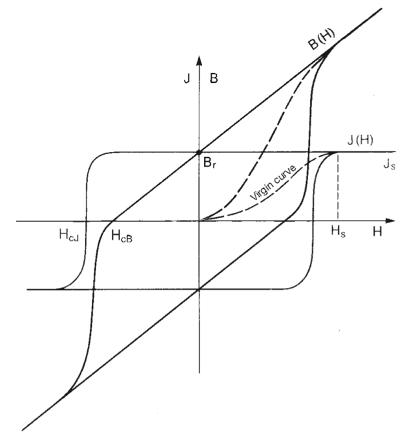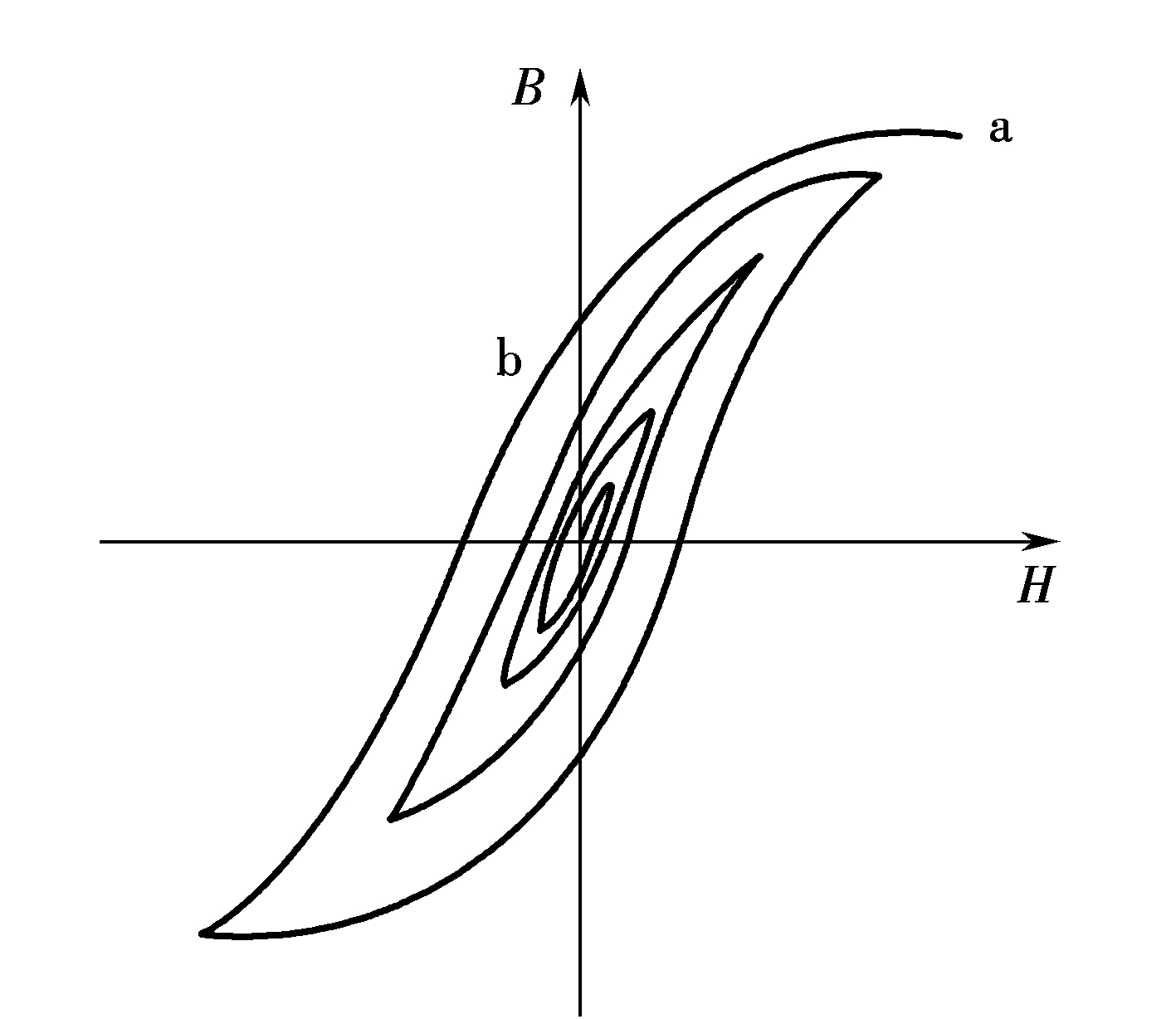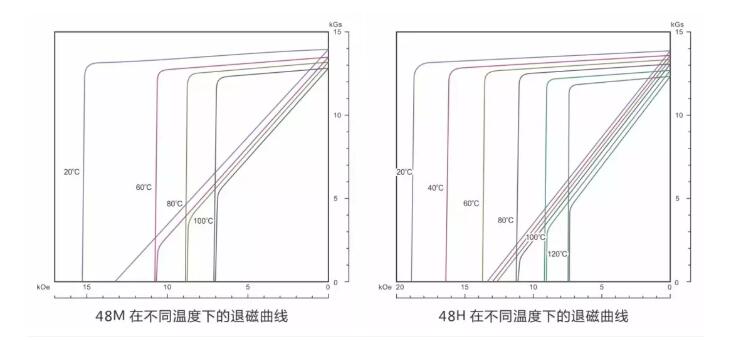How to read the magnetic hysteresis curve
Hard magnetic materials, such as NdFeB strong magnets, have two distinctive features. One is that they can be strongly magnetized under the action of an external magnetic field, and the other is hysteresis, that is, the hard magnetic material still retains its magnetization state after the external magnetic field is removed. It is the relationship curve between the magnetic induction intensity B and the magnetization field intensity H of the hard magnetic material.

When the magnetic field changes in the order of Hm→Hc→O→-Hc→-Hm→-Hc→O→Hc→Hm, the corresponding magnetic induction intensity B changes along a closed curve, which is called the hysteresis loop (blue in the figure above) Color curve)
Initial magnetization curve
The origin 0 in the figure indicates that the hard magnetic substance is in a magnetic neutral state before magnetization, that is, B=H=0. When the magnetic field H increases from zero, the magnetic induction intensity B rises slowly, as shown by the line Oa, followed by B With the rapid growth of H, as shown by ab, the growth of B then slows down, and when H increases to Hm, B reaches the saturation value Bm. This red curve is called the initial magnetization curve.
Hysteresis
When the magnetic field gradually decreases from Hs to zero, the magnetic induction intensity B does not return to the "0" point along the initial magnetization curve, but drops along another new curve Sr. Comparing the line segments OS and Sr, it can be seen that H reduces B correspondingly It also decreases, but the change of B lags behind the change of H. This phenomenon is called hysteresis. The obvious feature of hysteresis is that when H=0, B is not zero, and the remanence Br is retained.
Demagnetization curve
When the magnetic field reverses gradually from O to -Hc, the magnetic induction intensity B disappears, indicating that to eliminate the remanence, a reverse magnetic field must be applied. Hc is called the coercive force, and its size reflects the ability of the magnetic material to maintain the remanence state. The purple line segment is called the demagnetization curve.
Basic magnetization curve
Repeated magnetization of the same ferromagnetic material with different magnetic field strength H can obtain multiple hysteresis loops of different sizes, as shown in the figure below. Connect the vertices of the hysteresis loops, and the resulting curve is called the basic magnetization curve or the average magnetization curve. The basic magnetization curve and the initial magnetization curve are not the same line, but the difference between the two is not big. The magnetization curves used in the calculation of the DC magnetic circuit are all basic magnetization curves.

Intrinsic curve
The intrinsic magnetic induction intensity generated by the permanent magnet material being magnetized under the action of an external magnetic field is called the intrinsic magnetic induction intensity Bi, also known as the magnetic polarization intensity J. The curve describing the relationship between the intrinsic magnetic induction intensity Bi(J) and the magnetic field intensity H is the curve that F reflects the intrinsic magnetic properties of the permanent magnetic material, and is called the intrinsic demagnetization curve, or the intrinsic curve for short.
When the magnetic induction intensity B on the intrinsic demagnetization curve is 0, the corresponding magnetic field intensity is called the intrinsic coercive force Hcj. The value of intrinsic coercivity reflects the size of the anti-demagnetization ability of the permanent magnet material.
The squareness or squareness of the intrinsic demagnetization curve we often hear refers to the ratio of Hk to Hcj in the intrinsic curve. The larger the ratio, the shorter the orange line on the graph, the more stable the magnetic performance. Hk is the demagnetization magnetic field intensity value corresponding to Bi=0.9Br on the intrinsic demagnetization curve, and it is one of the necessary parameters for permanent magnet materials.
Generally speaking, the permanent magnet material manufacturer will provide the demagnetization curves of various brands of products at different operating temperatures, as shown in the figure below. It seems complicated, but the essence is to present multiple demagnetization curves and intrinsic curves on one graph.

